Press Clips: A Remarkable Journalism Tale, in Remembrance of the JFK Assassination
- Newsmakers with JR

- Nov 22, 2020
- 6 min read
Updated: Nov 22, 2020
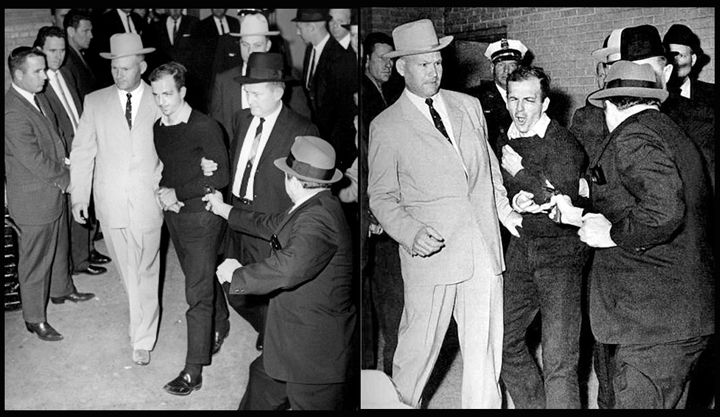
(Editor's note: It was 57 years ago this week when President John F. Kennedy was assassinated, followed two days later by the murder of his alleged killer, Lee Harvey Oswald. An inflection point of American history, the events marked the start of dramatic changes in the nation's culture and institutions, not least in the news industry. In commemoration of the anniversary, and in remembrance of the pre-Fake News era, Newsmakers is republishing this post, a behind-the-scenes saga about two news photographers, working for fiercely competitive Dallas newspapers, who recorded the shooting of Oswald).
It is said that the hardest thing to do in sports is to hit a major league fastball, an act that provides a batter about six-tenths of a second to see the ball, decide whether it’s a strike and then to swing or take.
Given that, it seems way past time that experienced photojournalists (average salary $48,000) start getting paid more like ballplayers (average salary $4.4 million).
That conclusion emerges from recalling how two local news photographers performed in the white-hot spotlight of history 57 years ago, when strip club owner Jack Ruby gunned down alleged presidential assassin Lee Harvey Oswald in the underground parking garage of the Dallas Police Department.
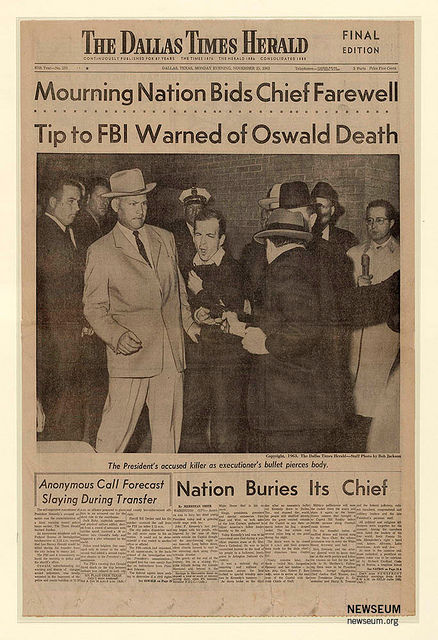
Six-tenths of a second, in fact, is precisely the difference in the timing of two great photographs taken of the event, one by Dallas Times Herald photographer Robert H. “Bob” Jackson,, and the other by the late Ira Jefferson “Jack” Beers of the Dallas Morning News. Beers’ image captured the instant before Ruby fired, Jackson’s the impact; Beers’ photo for the morning paper went around the world first, distributed by the Associated Press, Jackson’s was published a few hours later, and won the Pulitzer Prize. In baseball terms, Beers had hit a double, while Jackson launched a grand slam deep into the upper deck. The thrill of victory, the agony of defeat. The bittersweet tale of the two photographers, two cameras and two images made on Nov. 24, 1963 was told in an extraordinary story a few years ago by Michael Granberry of the Morning News. It became an instant classic amid the canon of assassination journalism.

While the career of the widely feted Jackson soared, Beers never stopped blaming himself for missing the shot of a lifetime; sick with depression and heart disease, he died at 51. From that moment on, Mr. Beers “never had as much confidence in himself,” said his daughter, who described him as “feeling let down. Not by anybody in particular. More by fate, I guess. He always felt like, ‘Why have I had to struggle so hard to finally get the picture and then not get it?“ Scott Sommerdorf, a veteran newspaper photographer, photo editor and Friend of Newsmakers, explained some of the technical differences between the two photos this way: “Timing, and composition come into play in assessing these two photos,” he said. “An old phrase; ‘If it’s not good enough, you’re not close enough” is applicable here. “(Beers) is just not close enough to fill the frame – one of the things we always look to do. Jackson’s shot is tighter and gives us more impact when we can read the faces on the men in this frame. “We could improve Beers’ photo with a crop to make it tighter, but Jackson’s is still superior because of his slightly better timing,” he added. “Of course neither photographer could have planned for this, but Jackson’s timing was much better. Jackson’s is one of just a handful of classic photos we can all easily recall, and the timing is the key to its power."
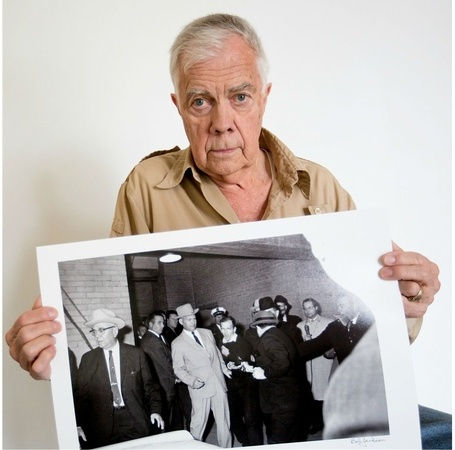
A hot-and-cold-blooded business. It’s a plain fact that daily news reporters are different than normal human beings, due to their lack of what might be called, oh say, the Basic Human Decency and Sensitivity Gene. So behind the scenes, the events of November 1963 — as horrible and tragic as they were for President Kennedy’s family, the nation and the cause of world peace — were for Beers, Jackson and the staffs of both Dallas papers one helluva’ hometown story, an occasion for their day-to-day caustic and aggressive competition against each other to be elevated to an unprecedented level of ferocity. A rare glimpse of that hard-core newsroom perspective was shown in "JFK 50: Eyewitness to History," a documentary prepared by the Morning News, the only surviving paper in Dallas, as part of its weeks-long coverage of the half-century anniversary in 2013. "And then we were getting the reports that we’ve got a helluva’ photograph,” recalled Jim Ewell, a reporter for the morning paper, “That Jack Beers had got the world breaking photograph of Ruby shooting Oswald.” Jackson remembered feeling deeply anxious upon his return to the Times Herald newsroom, unsure of what he captured in his camera of the Oswald shooting: “Jack Beers’ picture was already on the wire,” he said in the documentary, “and there was a little group of people out at the wire machine looking at it and they called me over and said ‘Do you have anything as good as this?’ And I said, ‘I’ll let you know after I run my film.’” (Background for the pre-sextagenarian crowd: once upon a time, long before pixels were invented, photos were taken with something called “film” that was “developed” in a “darkroom” using baths of chemicals and water. Oh, never mind).
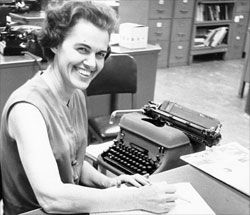
Take that, take that. Jackson again: “So it was a pretty tense moment. So I went in, ran my film and (the photo editor) was standing right outside the door. I remember holding up the wet negative, you know and looking at it, and it looked sharp, that was the first thing, it looked sharp.”
Reporter Darwin Payne was one of those hanging around the newsroom, desperately hoping that Jackson had something better than Beers: “There it was, in the water, I guess that’s what it was, cleaning off some of the chemicals, and I said, ‘there’s the Pulitzer Prize winner.’”
Vivian Castleberry, one of the few women writers on the paper and the JFK story, recalled the moment she saw the photo this way: “All of Dallas could have heard the screaming from that room when he developed that picture and the image came out of what he had.”
Jackson: “And I remember lettin’ out a yell of some kind and so we made a wet print…and carried it out to the newsroom and then we realized we beat the Dallas News."
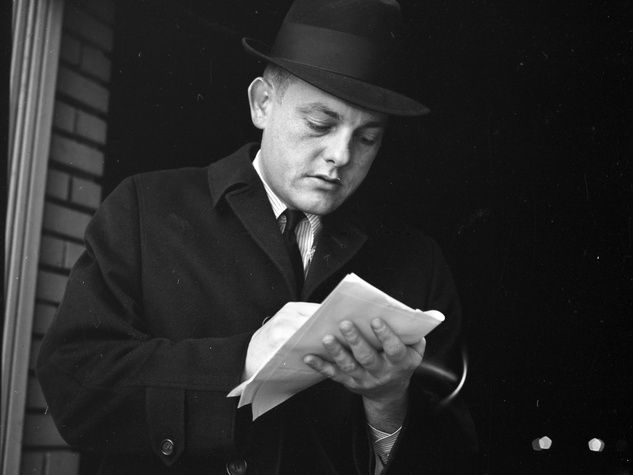
A footnote to the story. Famed CBS News honcho Bob Schieffer was then a reporter for the Forth Worth Star-Telegram. He remembered that his editors grabbed the Beers photo off the AP wire and quickly slapped it on the front page of his paper: “And I grabbed a bundle of those papers myself and took it down to Dealey Plaza and sold them, started selling them, like a paperboy down there ‘cuz this was such a huge scoop,” said Schieffer. “And what made it such a sweet scoop, there was such competition between the Dallas News and the Star Telegram in those days, we were on the streets of Dallas with the Dallas News picture on our front page, on the streets of Dallas, before the Dallas News got their first edition out.” Wow.
Bottom line. The current controversy over the withholding of many secret government documents about the JFK assassination testifies to its singular place among a handful of the most tragic and consequential events in U.S. history. Among the countless, monumental impacts of the president’s murder and its aftermath was the transformation of American journalism. The unprecedented, real time coverage of those days ushered in decades of live news reporting about events of atrocity and outrage, from Vietnam and Watergate to the killings of Malcolm X, Dr. King and RFK. And now another unparalleled event, the election and terrifying dominion of Donald Trump, once again has transmuted journalism forever. As the saying goes, we knew JFK and he's no JFK.
JR
(A version of this story was first published by the political website Calbuzz on the 50th anniversary of JFK's assassination).
Images: Side by side photos taken by competing newspaper photographers of Jack Ruby murdering Lee Harvey Oswald on Nov. 24, 1963 (Factinate.com); Dallas Times Herald front page Nov. 25, 1963; Dallas Morning News front page, same day; Bob Jackson holds his iconic photo (ILoveTexasPhoto.com); Vivian Castleberry, circa 1963; Bob Schieffer 1963.







Comments